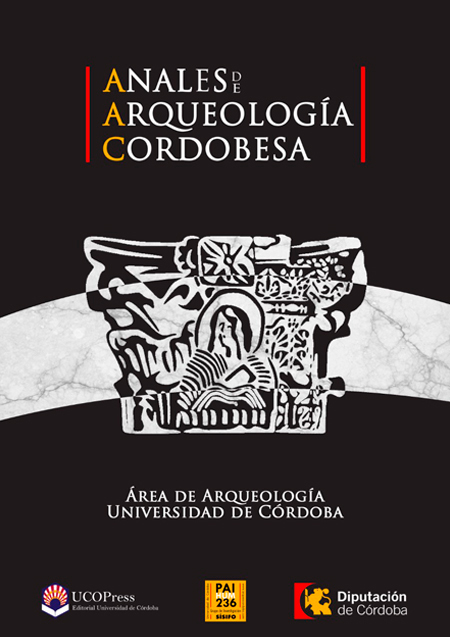Production of fish-sauces in Lusitania. The productive frame of the boca do rio and the other cetariae of the Algarve
DOI:
https://doi.org/10.21071/aac.v0i25-26.6417Keywords:
Fish-sauces, cetariae, roman Algarve, Boca do Rio, productive frame.Abstract
The development of the studies about the production and commerce of fish-sauces in Portugal took place, essentially, in the 1990s, a consequence of the large number of archaeological interventions in coastal areas resulted of the exponential urban growth. There is a big concentration of tanks (cetariae) and other roman fishery structures, both in the estuaries of the Tagus and Sado rivers as in the south coast of the Algarve. But, throughout the Algarve coast does not exists one of these archaeological sites fully excavated, and, the more recent discoveries (of 2010) were of sporadic preventive archeological works. This study updates the knowledge of the cetariae of the region, in particular about types, quantity, architecture, location, integration in a territory, state of conservation, estimating, for the cases of complete tanks, the productive capacities.Downloads
Download data is not yet available.
Downloads
Published
2015-12-01
How to Cite
MEDEIROS, I. E. (2015). Production of fish-sauces in Lusitania. The productive frame of the boca do rio and the other cetariae of the Algarve. Anales De Arquelogía Cordobesa, (25-26), 115–144. https://doi.org/10.21071/aac.v0i25-26.6417
Issue
Section
ARTICLES
License
Aquellos autores/as que tengan publicaciones con esta revista, aceptan los términos siguientes:- Los autores/as conservarán sus derechos de autor y garantizarán a la revista el derecho de primera publicación de su obra, el cuál estará simultáneamente sujeto a la Licencia de reconocimiento de Creative Commons que permite a terceros compartir la obra siempre que se indique su autor y su primera publicación esta revista.
- Los autores/as podrán adoptar otros acuerdos de licencia no exclusiva de distribución de la versión de la obra publicada (p. ej.: depositarla en un archivo telemático institucional o publicarla en un volumen monográfico) siempre que se indique la publicación inicial en esta revista.
- Se permite y recomienda a los autores/as difundir su obra a través de Internet (p. ej.: en archivos telemáticos institucionales o en su página web) antes y durante el proceso de envío, lo cual puede producir intercambios interesantes y aumentar las citas de la obra publicada. (Véase El efecto del acceso abierto).


